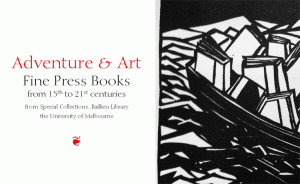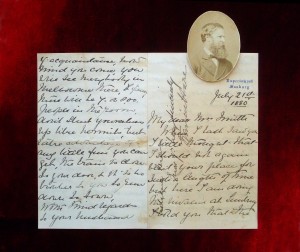Historian Uses Archives to Research Baillieu Biography
Historian, Honorary Fellow and member of the Archives Advisory Board at the University of Melbourne, Peter Yule recently launched his biography William Laurence Baillieu: Father of Australian Industry (Hardie Grant, 2012) at the Baillieu Library. Much of Peter’s research was carried out at the University of Melbourne Archives (UMA). Some extracts of his speech at the launch of this book give a sense of what he found.
I recall Geoffrey Blainey saying several years ago that the life of WL Baillieu was the great unwritten biography in Australian history. A biography was planned soon after his death in 1936, when his son Clive, the first Lord Baillieu, commissioned preliminary family history research, and work continued after the Second World War with the production of two manuscripts, but they were never published. Strangely, the main reason for the failure of the earlier attempts to write a biography was that there didn’t appear to be enough material to base it on. Before the 1970s virtually none of WL’s letters were available – leading one historian to conclude that he was possibly illiterate. Since that time, however, a vast amount of archival material has become available, largely through the efforts of Darren Baillieu, his son David, the executors of Clive Baillieu’s estate, and Frank Strahan, the founder of the University of Melbourne Archives. There are now literally thousands of WL’s letters in the University Archives and more are held by various family members. Far from being illiterate, WL was an eloquent and creative writer, with a wonderful turn of phrase and a fine sense of humour.
As I researched and wrote this book my appreciation for the extent of WL’s achievements steadily grew. The best brief summary I think is the one by Billy Hughes quoted on the back cover – Billy Hughes, by the way, began as a bitter enemy of WL and accused him of trading with the enemy in the First World War, but came to admire him greatly – Billy Hughes said of WL: ‘He was a dreamer of dreams and, with his genius for constructive enterprise, inexhaustible energy and courage, made them all come true’. No Australian – probably few people anywhere in the world – founded or developed so many new businesses in such a wide range of industries. WL – usually working with one or more of his many close associates – founded or built up many major mining and metals processing companies – most notably the Zinc Corporation (the ancestor of Rio Tinto), North Broken Hill, the lead smelter at Port Pirie, and the zinc works at Hobart; he was the driving force behind manufacturing companies such Metal Manufactures, Dunlop, British Australian Lead Manufacturers (the ancestor of Dulux paints) and APPM, which built the paper mill at Burnie in Tasmania; he and Theodore Fink built the Herald and Weekly Times into Australia’s major media company, and he and Monty Cohen formed Australia’s dominant brewery – Carlton & United. Before 1914 he drove the growth of Melbourne’s major electricity supply company and planned the development of the brown coal deposits of the La Trobe Valley. And there were many more, including, of course, EL&C Baillieu stockbrokers and the Ballieu Allard real estate business which WL started with his brothers. Most people who accumulate large fortunes do it in one industry – think of Frank Lowy in shopping centres, or Rupert Murdoch in media – but WL created successful businesses in many industries. He saw the big picture, planned for the long-term and genuinely saw nation building as a central part of his work. There has never been a business empire in Australia with anything like the breadth or diversity of the Collins House group, and none has made such an important contribution to Australia’s economic development.
Not many of us will be ready to tackle the next great unwritten biography of Australian history, but if you have a research idea of your own, big or small, get in touch with UMA to see how we can help.





